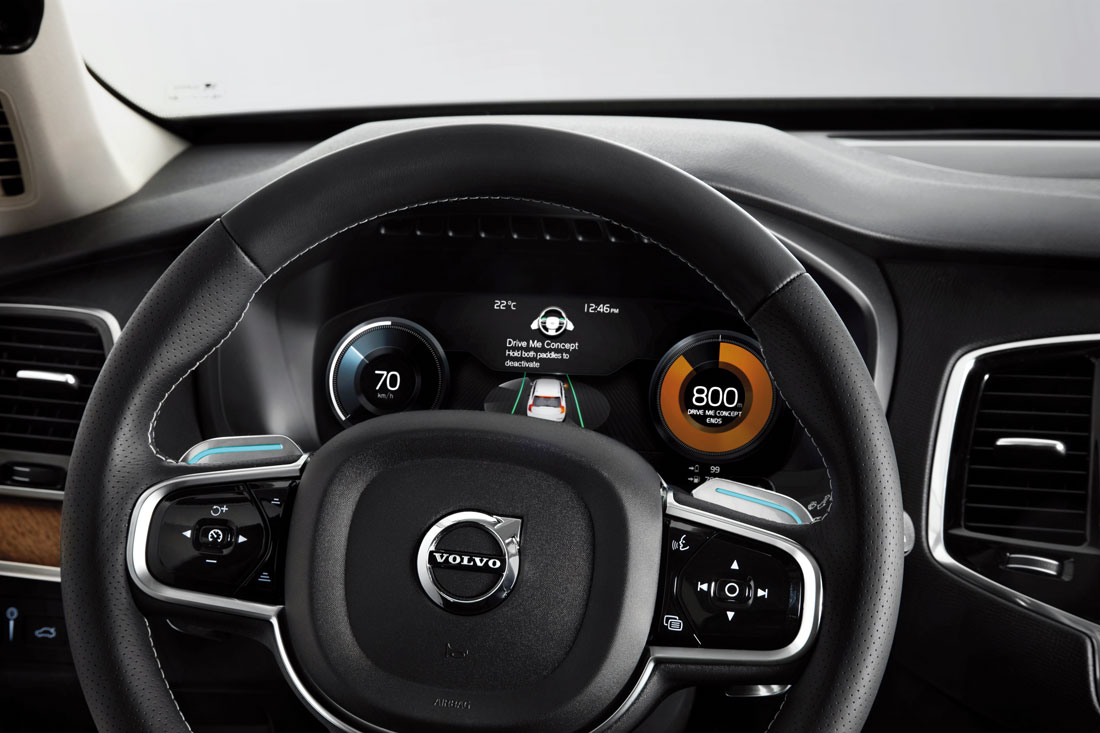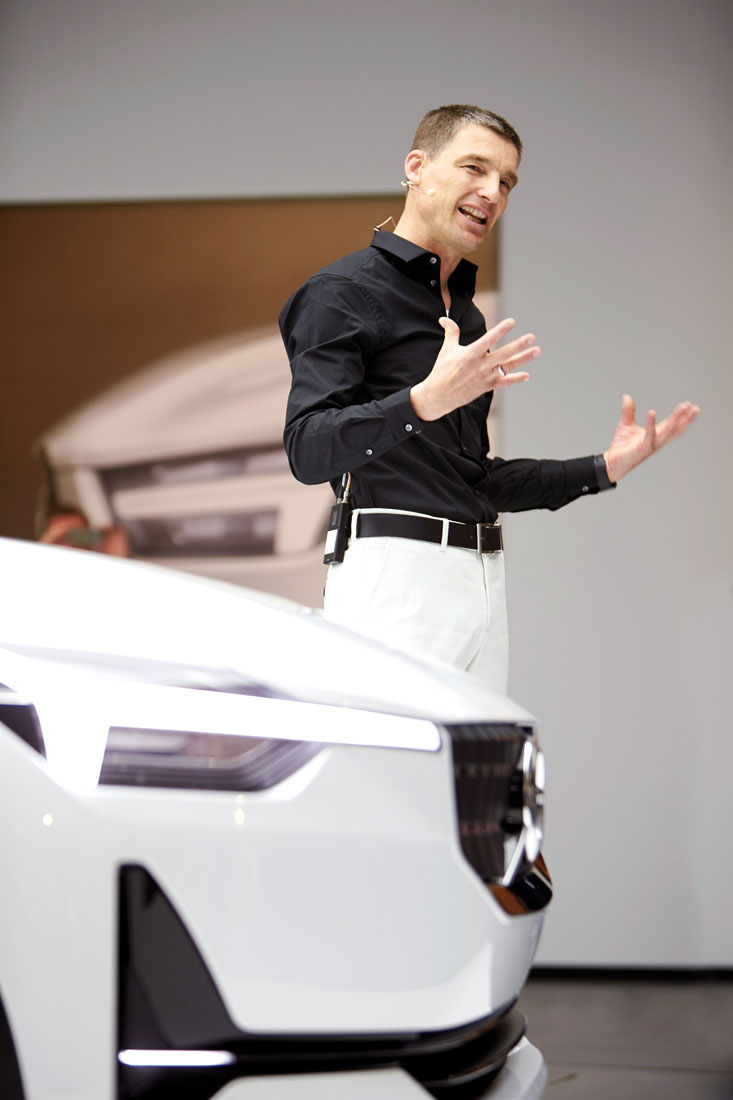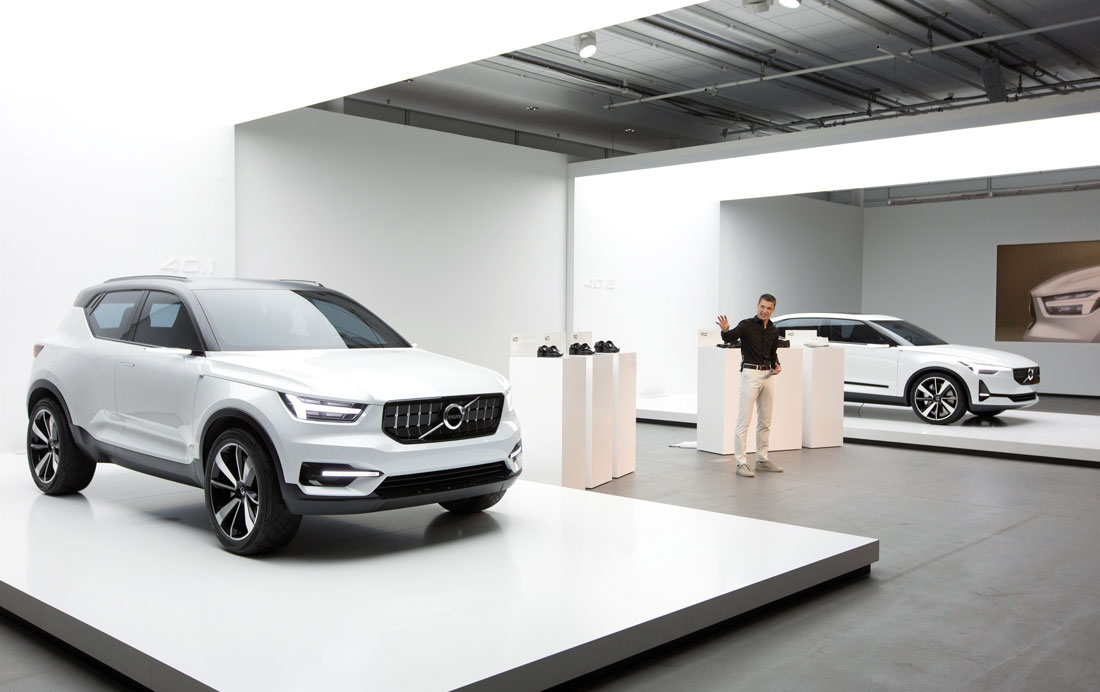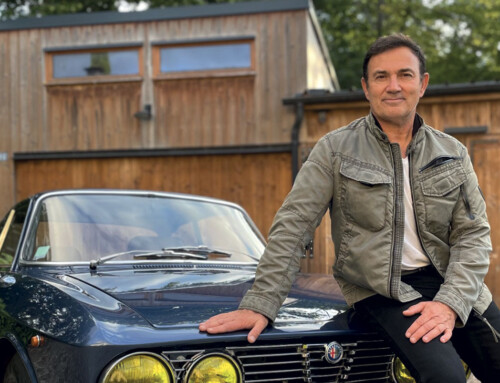There’s one ingredient that is now indispensable in any recipe for a successful, good design: the user experience, how people interface with the automobile in a world changing at an ever faster pace. “We too, and indeed the whole company, are learning a new approach to define value for the customer”, explained Volvo design director Thomas Ingenlath. We met him at Detroit, where – rather than on a specific model – the Swedish brand turned the spotlight on the Drive Me autonomous driving project, of which it is one of the main partners.
As always for Volvo, the whole project revolves around the human element, rather than being developed from a purely technical approach. “Designers often find themselves at odds with a ‘scientific’ approach” continues Ingenlath “although for the time being, we are working on a simpler facet of the project than R&D: creating an ambience in which occupants will be able to engage in a variety of different activities, as we know that autonomous driving content will be a normal part of cars within a decade – even though this will be a very gradual transition.”
Volvo Cars had already presented its take on this topic in 2015 with the Concept 26, and studies in the connected interior and autonomous drive vehicles have, naturally, gone further since then. “We are working on reconfiguring the passenger compartment, with complete freedom for the ideas proposed and continuously asking ourselves questions. For example, how do people really interact with the screen in a car? For how long, and is it really necessary? Safety is an absolute prerequisite in all of this, but this work is also – and above all, in fact – intended to find out what actually constitutes personal experience, individual preferences and one’s own style. This will be fundamental in the relationship with the customer.”
One of the most striking premium details of the Swedish brand’s new 90 series is the monitor at the centre of the dash – a sort of vertical tablet integrated perfectly into the style and which proves to be extremely functional. “Some have said that there are others that are more intuitive to use at first, but we’ve seen that after a few hours of use, it’s unbeatable. And this is precisely what we’re working on: creating a relationship with objects.”
Another fundamental requisite for Volvo is the use of superior quality, original materials. “We never adhere to the practice of designing a cabin first and then trimming it afterwards. We identify materials and then think of what we could use them for, and in some cases materials dictate the forms themselves. For example, an element which starts life as wood could not exist any other way. ‘Decoration’ is not a word that works for us.”
New scenarios for mobility are opening up, among which car sharing. Does this mean that cars should be designed to appeal to everyone? Ingenlath has no doubts: “No, what people expect most is an environment that is more welcoming and friendlier than what we have today. But rather than making interiors that are too neutral, we must create even more specific ambiences. It’s like when you choose and book a hotel – at that moment you’re looking for a certain atmosphere, a clearly defined experience.”
So there’s no danger of Volvo losing its identity any time soon: “I always tell my designers that when we address these topics, we’re not looking for a universal answer but the Volvo answer. And that’s what people expect from us when they buy a Volvo.”
















